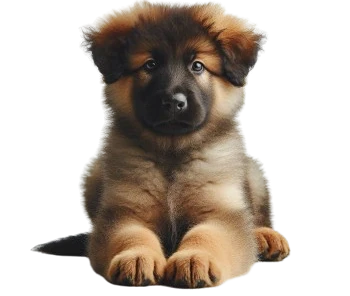
The Yugoslavian Shepherd Dog of Sharplanina is a shepherd dog originating from the Šar Mountains, located on the border between Kosovo and North Macedonia. It is primarily used for guarding livestock, protecting sheep and other animals from predators such as wolves and bears. This breed is valued for its strength, bravery, and loyalty to its owners.
The Yugoslavian Shepherd Dog of Sharplanina is a large, robust, and powerful dog with an imposing appearance. It has a broad head with a slightly domed skull and a strong, straight muzzle. Its ears are medium-sized, drooping, and set high on the head. Its eyes are small, almond-shaped, usually dark brown, expressing great determination and alertness. Its body is well-muscled, with a broad chest and strong legs that allow it to move easily over rough terrain. The tail is long, carried low, and curved like a saber.
The Yugoslavian Shepherd Dog of Sharplanina typically stands between 55 and 65 cm (22 to 26 inches) at the withers, although some individuals may be slightly taller. The weight ranges from 30 to 45 kg (66 to 99 pounds), with males often being heavier than females. Its size and strength make it an excellent protector of livestock in challenging environments.
The Charplaninatz's coat is dense, thick, and long, with a soft undercoat that protects it from extreme weather conditions. The coat color varies from dark gray to light gray, though brownish or fawn hues may also be present. This coat requires regular grooming to prevent matting and to keep the dog healthy, especially during shedding seasons.
The Yugoslavian Shepherd Dog of Sharplanina is known for its independent, courageous, and protective nature. It is extremely loyal to its family and is generally wary of strangers. As a working dog, it is vigilant, reliable, and capable of making independent decisions when guarding a flock. While it is affectionate with family members, it can be reserved and requires early socialization to ensure it coexists well with other animals and people.
The Charplaninatz is generally a robust breed with a lifespan of 11 to 13 years. Like many large breeds, it can be prone to hip dysplasia and other joint issues. Regular care, a proper diet, and veterinary check-ups are essential to maintaining its health and well-being.

The Yugoslavian Shepherd Dog Puppy from Charplanina is a powerful and robust breed, famous for its skills in protection and herding. With its dense and weather-resistant coat, this dog is perfectly suited for the harsh climatic conditions of the mountains. It is intelligent, loyal, and very attached to its family and flock. This dog requires firm training and early socialization to thrive and behave well in various environments.
The price of a Yugoslavian Shepherd Dog Puppy from Charplanina generally ranges from 600 to 1200 euros, depending on the breeder and lineage. It is advisable to choose a certified breeder to ensure the puppy's health and well-being. Additional costs for vaccinations and spaying/neutering should also be considered when adopting.
The Yugoslavian Shepherd Dog Sharplanina, or Sarplaninac, is a robust, independent, and protective breed, traditionally used for guarding livestock. To train this breed, it is essential to start early and use positive methods, as it responds well to rewards like treats and praise. However, its protective instinct and independence require a firm yet gentle approach to channel its energy and temperament.
Due to its heritage as a livestock guardian, recall and obedience training are crucial aspects of its education. Practice recall exercises in various environments to reinforce obedience. The Sarplaninac also excels in guarding and protection activities, so incorporate role-playing games or defense exercises to stimulate its natural talents while strengthening your bond.
Socialization is another key point. Expose it to different environments, people, and animals to ensure it becomes a well-balanced and confident dog. Finally, be patient and consistent, as this breed can be stubborn. With proper training, the Yugoslavian Shepherd Dog Sharplanina will become a loyal, obedient, and devoted companion.